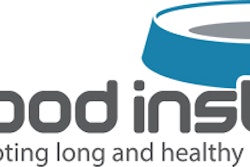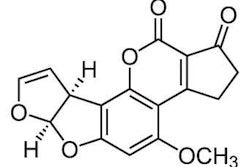During the Association of American Feed Control Officials’ “mid-year” meeting January 17–19, 2012, in Reno, Nevada, USA, the agenda for the Pet Food Committee was relatively light, with no new items up for discussion. Yet one piece of old business held court.
It was the amendment to AAFCO Model Regulation PF9, which would in part require a calorie content statement on all dog and cat food labels (currently it is only mandatory on “lite” and “less calories” product labels). The American College of Veterinary Nutrition first proposed this amendment in 2005. Seven years and two working groups later, the amendment has finally moved out of the Pet Food Committee for further deliberation within AAFCO.
Actually, the committee voted to accept the amendment in January 2011, but it was held up by the board of directors until the committee finished its work on the proposed amendment to PF10. That proposal would have set forth requirements for dog and cat foods bearing "weight control" claims and was first offered by the Pet Food Institute as an alternative to the ACVN proposal. Regardless, the industry withdrew its support of amendment of PF10, so the working group and committee dropped the matter altogether.
As a result, the amendment to PF9, along with a revised model affidavit intended to be submitted upon request to state feed control officials to support the calorie content statement, was moved to the board with the recommendation to advance it to the Model Bills and Regulations Committee. Its job would be to review the proposal for consistency in format and language with existing model regulations, not to alter content or intent.
It was suggested by an industry representative that the amendment not be advanced by the board until it is clear what, if any, additional petfood label changes may be needed as a result of new federal regulations to be imposed by the Food and Drug Administration Amendments Act of 2007. While proposed regulations under the act may be out within the next year, it could be a few more years or even longer for them to be finalized. (For example, the Food and Drug Administration rule to require dual avoirdupois/metric net content statements was proposed in the mid-1990s but to date has still to be published as a final rule.)
Although admittedly it would be preferable to combine label changes where possible, the suggestion to table the amendment to PF9 was perceived as an obvious delay tactic. Perhaps we should wait to see if the Mayan calendar prediction of the world’s end in late 2012 comes true, too?
Of less contention was the Pet Food Committee’s work on a new statement intended to appear prominently on the AAFCO website. There is much confusion about the role of AAFCO in approval or testing of petfood products. The statement would make clear that AAFCO does not approve, test or certify animal feeds (including petfoods and specialty petfoods) in any way, and unqualified claims to that effect would be considered false and misleading.
The Nutrient Profiles & Feeding Protocols Expert Panel has received and considered outside comments on its proposed modifications to the existing means of substantiation of nutritional adequacy for dog and cat foods. As a result, there will be a number of changes to the proposed documents. The panel’s responses and revisions will most likely be released within the next few months, with the plan for the Pet Food Committee to act on the panel’s recommendations at AAFCO’s annual meeting in August 2012.
No new issues were reported by the Small Manufacturer’s Working Group, which was responsible for development of the “Business of Pet Food” website that went online in 2011 (www.petfood.aafco.org). However, it is viewed as a work in progress, and the working group will continue to monitor and update the website as needed.
The Carbohydrate Working Group previously recommended to allow for guarantees for maximum percentages of dietary starch and sugars on petfood labels but not to allow claims. It has yet to provide regulatory language to allow for the new guarantees, though. Hopefully, that will be completed for consideration by the committee in August.
Finally, a small group was formed to investigate a complaint about AAFCO’s policy regarding plaque and tartar control claims on petfood labels. The outside group contends the policy is not consistent with the Food and Drug Administration’s policies on the matter.


















